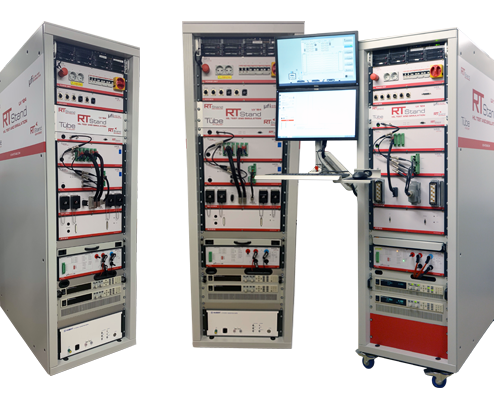Improving LV124/LV148 ADAS Testing with a Modular Generic Approach
article published in the NI Automotive Journal
Read the whole NI Automotive Journal edition
The automotive industry faces a dynamic innovation pace and mounting pressure to meet strict safety requirements for ECUs, especially for advanced driver-assistance systems (ADAS).
Challenge
Confidently comply with evolving LV124/LV148 standards withoutconstantly changing test technology to adapt to new requirements.
Solution
Utilize a scalable, automated solution designed to test LV124/ LV148 compliance and OEM derivatives that adapts to any ECU.
ADAS ECU Testing Challenges
ADAS ECUs are increasing in complexity and require more in-depth testing to ensure their functionality and safety. Manual test methods are too expensive and slow, and the risks of relying on insufficient testing data or the short attention span of a person are too great.
LV124/LV148 standards and their specific OEM derivatives are under constant review, and each release has new demands, so test departments and labs need to be equipped with a flexible setup to modify tests along requirements. ECUs that need to support more than one automotive network call for a test system that can be scaled up to meet power and electrical requirements according to standards such as LV123 or derivatives such as VW 80300.
RTStand LV124: A Scalable, Upgradable System
WKS Informatik, an NI Partner, focuses on automated test systems that can remove human error from validation and reduce test times and costs for ECU manufacturers.
RTStand LV124 is a fully automated system that tests compliance with LV124/LV148 standards and their specific OEM derivatives. The scalable hardware platform goes up to 96 pins and can include buses such as CAN, LIN, and Automotive Ethernet.
The LV124/LV148 standards describe different electrical tests that simulate the types of disturbances that happen in a car, from undervoltage (during cold winters) to very short interruptions (due to cable breakage) to overload dumps to short circuits.
Usually, various test setups are needed to cover these tests, but because of the following four core components built on NI technology, you can run all electrical tests with the RTStand LV124. Additionally, by adding other components, such as ECU loads, you can customize the system for a variety of ECU types.
Core Components
01 Tube Analyzer ensures that all ECU pins and currents are monitored and logged in parallel with precise time synchronization.
02 Ultra-fast interrupter needed for short interruption requirements can also interrupt fieldbuses such as Automotive Ethernet.
03 RTStand SignalGeneration enables the automated generation of norm pulses and the definition of additional custom pulses.
04 RTStand enables the test automation and integration of third-party tools, such as CANoe/CANape for restbus simulations or existing customer software modules.
Benefits
Flexibility: The RTStand LV124 system meets LV124, LV148, and OEM-specific derivatives with flexible test sequence creation through TestStand and LabVIEW. By integrating additional ECU-specific loads or simulation units, you can scale and upgrade the system to meet a variety of customer needs and new ADAS ECU requirements.
Insight: Unlike usual test setups, RTStand LV124 displays the ECU behavior in the voltage and current waveforms for all pins, completely time synchronized. This gives you unprecedented insights into the software and hardware performance of the ECU during tests.
Cost Reduction: With fully automated testing, you can significantly reduce the time you usually invest in test preparation, execution, analysis, and documentation. Moreover, the generic aspect of the system enables fast reconfiguration for testing new releases and generations of ECUs. With the RTStand LV124, customers reduced their test execution and analysis times by more than 50%.
Authors:
ANDREEA SOLOMON
BUSINESS DEVELOPMENT
RONALD KAEMPF
CEO
WKS INFORMATIK GMBH







